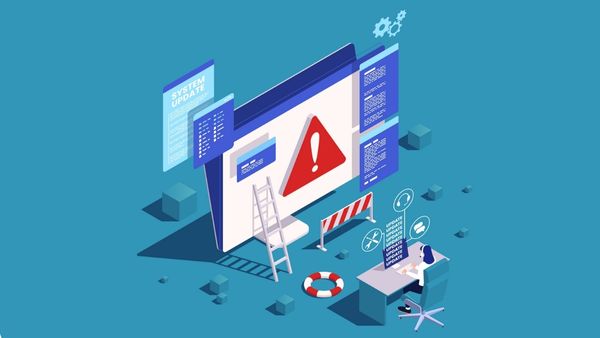
When business leaders consider the necessary measures for cybersecurity, most of them first think of investing in professional services such as monitoring, detection, and incident response. Although the implementation of such services is critical, it is equally important to make efforts to promote cybersecurity awareness.
Cybersecurity awareness can transform your organization’s employees into the first line of defense against cyber threats and stopping incidents before they even start. According to a recent study by IBM, human error plays a part in upwards of 95% of security breaches, highlighting the overwhelming need for improved education and training.
What is Cybersecurity Awareness?
Cybersecurity awareness is the practice of understanding and mitigating the risks associated with using the Internet, technology, and digital devices.
It involves staying informed about the latest threats and vulnerabilities, and taking steps to ensure that you are using the Internet and other digital technologies in a safe and responsible manner. This can include creating strong passwords, being cautious when clicking on links or downloading files, and keeping devices and software updated with the latest security patches.
By being aware of the risks and taking protective steps, everyone in an organization can help to ensure that data and digital assets remain secure.
Why is Cybersecurity Awareness Important?
As we increasingly rely on technology for a myriad of purposes, we become more vulnerable to cyber attacks such as identity theft, malware, and phishing scams. Particularly with the sharp increase in remote work – which translates to a significant rise in vulnerabilities – awareness of these threats is essential.
Cybersecurity awareness is especially important for businesses, as they are a prime target for cyber attacks. According to the 2022 Cost of a Data Breach Report by IBM, the average cost of a data breach for a business in the United States is $4.35 million. This includes costs associated with investigating the breach, notifying customers, and implementing measures to prevent future breaches. In addition to the financial impact, data breaches can also damage a business’s reputation and lead to a loss of trust among customers.
By promoting cybersecurity awareness among employees, businesses can reduce the risk of a data breach and mitigate the associated costs and reputational damage.
Crucial Steps to Ensure Cybersecurity Awareness Within Your Organization
The importance of cybersecurity awareness cannot be overstated. There are several practical steps you can take to make it a priority for your organization.
1. Create a comprehensive policy for cybersecurity.
When it comes to ensuring cybersecurity awareness for a business, developing a robust cybersecurity policy is an essential first step.
This policy should establish a clear set of guidelines for employees to follow when using technology, including the use of strong passwords and the identification of phishing scams. Additionally, it should require employees to report suspicious activity immediately to IT or security personnel, as well as establish role-based access controls to limit access to sensitive information and systems.
Details to address in your organization’s cybersecurity policy include:
- Rules and expectations for mobile devices/equipment, internet browsing, social media, and email
- A clear set of steps for reporting/responding to potential threats
- A plan for enforcing security measures such as scheduled password changes, patching, etc.
- A system for communicating cybersecurity best practices, procedures, etc.
- Details about any compliance requirements
2. Conduct cybersecurity audits on an ongoing basis.
Regular security audits are also critical to ensuring cybersecurity awareness for a business. These audits can help identify potential weaknesses in the business’s cybersecurity policies and systems, allowing businesses to address them before they can be exploited.
Audits should be conducted on a regular basis, with the frequency of audits determined by the level of risk associated with the business’s operations.
3. Implement cybersecurity training for all employees.
Above all, proactive cybersecurity training is critical to keeping employees up-to-date on the latest threats and best practices for staying safe online. This training should be conducted on a regular basis, with refresher courses provided as needed. Incorporate security training into your onboarding processes to demonstrate its importance from day one.
The ISACA suggests that there are six essential components of cybersecurity, and that effective training addresses all of them:
- Understanding vulnerabilities
- Identifying an incident/attack when it is happening
- Understanding that a cyber attack can happen at any time
- Taking protective steps during an incident
- Cyber-resilience
- Comprehending the high importance of cybersecurity
The type of training and education should be tailored based on your organization’s needs, as well as the roles and responsibilities within various departments and positions. For example, cybersecurity awareness education will likely look much different for employees in customer-facing roles versus those in corporate leadership.
Effective training for cybersecurity awareness must be based on the key components of cyber defense, incorporating interactive training methods to engage employees. Simulated cyber attacks can be a valuable method for reinforcing safe practices, supported by actionable insights that equip your organization to make targeted improvements to training efforts when necessary.
Beyond facilitating cybersecurity training, your organization may also want to consider organizing specialized workshops focused on core topics such as disaster recovery, business continuity, and risk management.
4. Take care to set up extra protections if your organization utilizes remote work.
Remote work can provide measurable benefits for an organization and its employees, and it is quickly becoming a foundational part of the way many companies do business. But while there are many advantages to remote work, there are also certain risks.
With the proper precautions, your organization can leverage the benefits of remote work while also mitigating potential threats. This includes making significant efforts to educate remote staff about the unique risks and cyber threats they may face, as well as creating a solid strategy for endpoint protection.
5. Ensure that your organization’s leaders model cybersecurity best practices.
Another useful way to achieve increased awareness is by having senior management serve as a model for cybersecurity best practices. By taking the lead and demonstrating a commitment to cybersecurity, senior management can set the tone for the entire organization and create a culture of security awareness.
This can include following strong password practices, regularly updating software and systems, and undergoing regular security training. Ultimately, when senior management makes cybersecurity a priority, it sends a clear message to the rest of the organization that security is a critical aspect of business operations.
Protect Your Business by Promoting Cybersecurity Awareness
Businesses of all sizes and industries require good cybersecurity awareness to protect their digital assets and information. This helps to prevent data breaches, cyber attacks, and other security incidents that can compromise sensitive information, damage business reputation, and result in financial losses. By promoting a culture of cybersecurity awareness, businesses can ensure that their employees understand the risks of cyber threats, are trained on best practices for data protection, and take proactive measures to mitigate potential vulnerabilities.
I hope you found this information helpful. As always, contact us anytime about your technology needs.
Until next time,
Tim
Meet the Author


